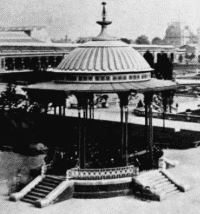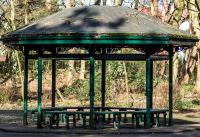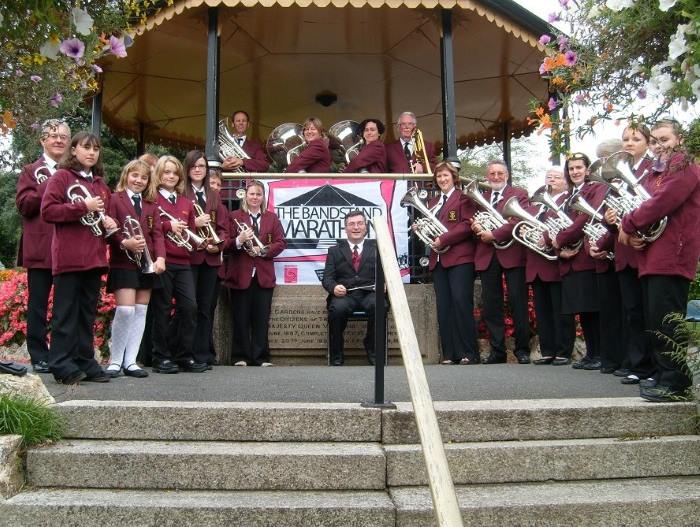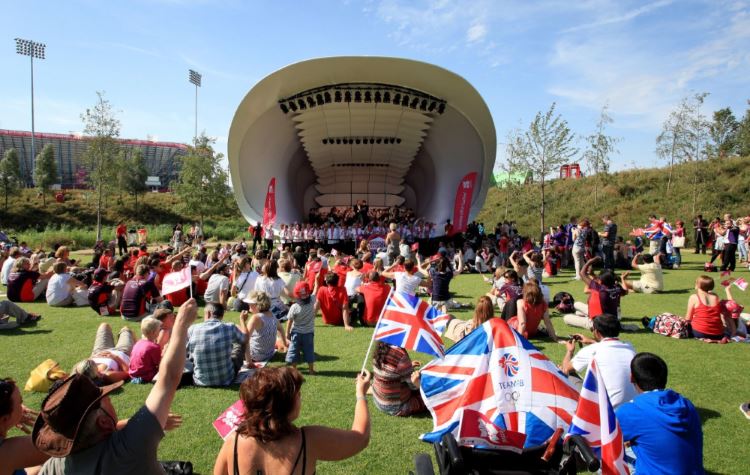Bandstands are features still found in many of our parks, open spaces, squares and seaside towns. A reminder of outdoor music and theatre in the Victorian era, they have varying designs with some looking like Moorish temples, Chinese pavilions or rustic cottages. Many bandstands were demolished in the 1980s and 1990s after years of neglect. The turning point for the renaissance of bandstands was with the launch of the Heritage Lottery Fund in 1997 which began investing in public parks and gardens, including the renovation of bandstands.
History of Bandstands in the United Kingdom
1861

Bandstands were originally called band houses. The first recorded domed band house was built in 1861 at the Royal Horticultural Society’s gardens in South Kensington. This was at a time when public parks were being opened so the community could benefit from outdoor leisure activities. Bandstands were built as a focal point as music was seen as good entertainment and with their raised platforms and cast iron decoration, were a draw for the crowds. By the end of the nineteenth century, it was usual to see a traditional octagonal bandstand in nearly every seaside resort and public park.
The idea for bandstands came from the pleasure gardens that were popular among the rich and fashionable in the seventeenth and eighteenth centuries. These gardens combined music, acts and fireworks with music pavilions, which hosted promenade concerts, so called because the audience could take a stroll as they listened to the music. It was from these musical events that the bandstand evolved with local performers giving recitals watched sometimes by several thousand people.
1950s

By the 1950s, the popularity of bandstand concerts plummeted. With the growth of cinema, radio and television as forms of entertainment, bandstands were abandoned and many became neglected. In Leeds, only one out of its 18 bandstands remained and the number in London was half what it was pre-war.
1960s

A series of free bandstand concerts by big names in the 1960s like David Bowie, Fleetwood Mac and Pink Floyd attempted to revive bandstand concerts, but by 2001 more than half of the bandstands in historic parks across the country were out of use. However, Heritage Lottery Funding has seen more than one hundred bandstands restored to former glory and offering music, not just brass bands, but rock, opera, street theatre and drama.
The Bandstand Marathon History
2008

The Bandstand Marathon helped support the return of bandstands as places to play and hear music. By 2008, many bandstands had been restored by a small number of conservation specialists using foundry archives to recreate the ornate designs previously lost.
The first Bandstand Marathon first took place on 26-28 September 2008 as part of the Open Weekend of the Cultural Olympian, founded on the principle of Pierre de Coubertin, the founder of the modern Olympic movement, that the movement would link sport, culture and education. Over the next four years the Cultural Olympian included hundreds of events showcasing Britain’s arts and culture in the run-up to the 2012 games, being a key factor in London winning the bid to host the Olympics. All of the projects involved in the Cultural Olympiad were committed to highlight the UK’s international character and outlook, including diversity and the promise to make the games accessible to all. The Cultural Olympiad also coordinated the opening and closing ceremonies at the games.
The Bandstand Marathon were concerts taking place at the same time on the same day across the country in towns, villages and cities. It was the broadest nationwide community-based event in the United Kingdom. In 2008 the event was piloted in the South-West where 50 concerts took place from Cheltenham to Penzance and Bournemouth to Guernsey.
2009

In 2009 the project expanded to the rest of the country and there were 120 concerts. The concerts generally involved traditional brass, silver and concert band, though all other music ensembles were able to take part including rock bands and African drummers.
As well as promoting musical talent and inspiring potential talent, the event was also a celebration of the town and park bandstand, bringing the community together though music from all cultures, not just England’s past.
2010

The 2010 event launched around 70 concerts, a reduction due to the harsh economic climate in the UK at the time, but still stretching from Penzance and Guernsey in the south all the way north to Darlington and Blythe.
2011

In 2011 more than 100 venues were again involved and for 2012, the year of the Olympics, 230 events took place, with Coldplay’s hit Viva La Vida played by all bands at 14:00 across the whole of the UK, played on bag pipes in Musselburgh, ukuleles in Stourbridge and many others.
The Bandstand Marathon ended with the closing of the 2012 London Olympic Games, but is looking to begin again…
